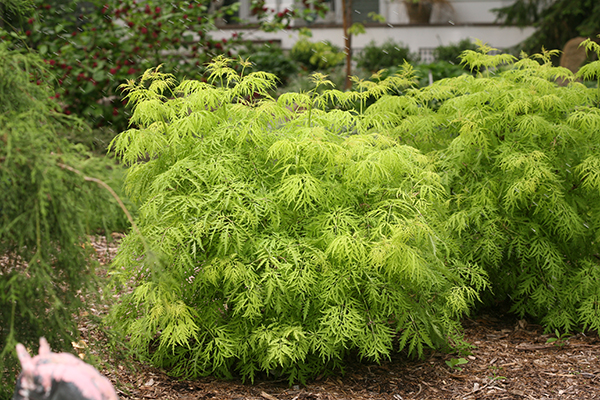Hello and Happy Monday!
It's hard to believe how fast summer is racing by! If you live in a northern climate like I do, before you know it we'll be raking leaves and cleaning up garden beds for a long winter's nap.
But let's not get ahead of ourselves... I for one want to enjoy every minute what's left of the summer. And what's more enjoyable than beautiful, sweet clematis? This year I planted Pink Mink® Clematis on a trellis alongside my front porch. I have some hops growing there, so hopefully they can play nice together. I was glad to read in Jane's Plant of the Week that clematis needs a year to establish roots, since mine hasn't really taken off in size like I thought it might.
Like Audrey Hepburn said, "To plant a garden is to believe in tomorrow."
So take some time to kick back and relax with some 'Sweet Summer Love' - fall will be here soon enough.
- Natalie
Sweet summer, indeed!
 'Sweet Summer Love' Clematis is looking especially fabulous right now. We've had a number of groups visit the gardens in the past few weeks, and all of them have been attracted to this plant - even before they smell its delightful fragrance. Here's a really cool time-lapse video of it.
'Sweet Summer Love' Clematis is looking especially fabulous right now. We've had a number of groups visit the gardens in the past few weeks, and all of them have been attracted to this plant - even before they smell its delightful fragrance. Here's a really cool time-lapse video of it.'Sweet Summer Love' Clematis is kind of like a sweet autumn clematis, only it blooms earlier and for a longer period of time. And it's cranberry purple, not white. Also, it isn't invasive. So why are we talking about sweet autumn clematis at all?
'Sweet Summer Love' is hardy to USDA Zone 4 and will grow 10' or more. We strongly recommend growing it on a trellis or fence. It will grow in full sun or partial shade. We have found that it needs a season to get its legs: that first year the growth will be in the roots, not the foliage. Let it do its thing, and when it's established it will put on that top growth and produce the flowers you want.
How do you say that?
Pronouncing plant names can be intimidating, even for experienced gardeners. As for folks who are new to the hobby or the trade, it can be really scary.
You can avoid the situation by sticking to common names, but then you'll surely get a scolding from the botanical names crowd. They do have a point; using Latin nomenclature ensures that everyone is on the same page. Common names can be inconsistent and cause a lot of confusion, especially when you're talking to someone from a different country or region.
But diving in and trying to say a Latin name without some coaching can lead to some embarrassing fumbles. I hate it when people are condescending about pronunciation. After all, Latin is dead, and French is a classed-up form of Dark Ages Latin dialect. It sounds great.
We're trying to alleviate nomenclature anxiety by producing some videos showing how we pronounce various plant names. I hope they help you and your staff, especially any rookies out there.
Be nice to people who are trying to figure it out. You were once there, too. And we might all sell more plants if we were less harsh on people trying out Cotoneaster for the first time.
Plant of the Week is written by Jane Beggs-Joles.











